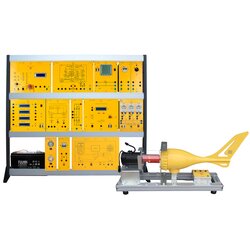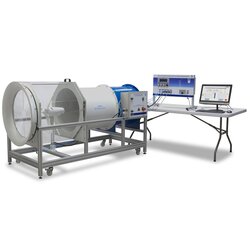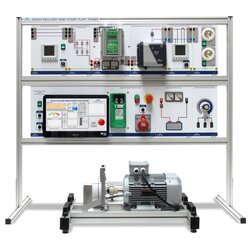Wind Power Plant (DL-WPP)
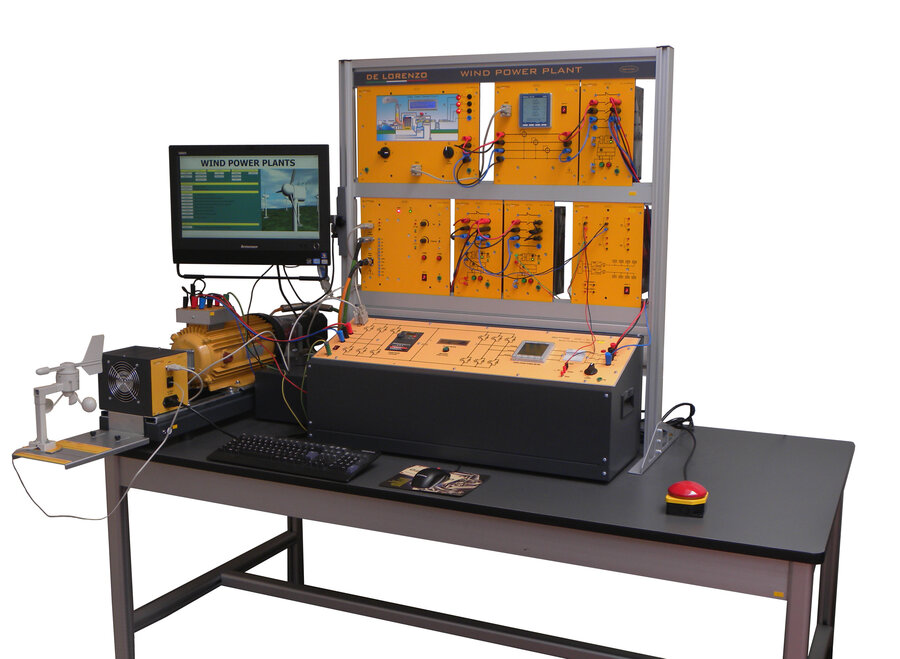





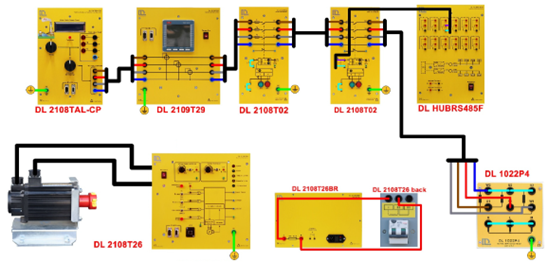
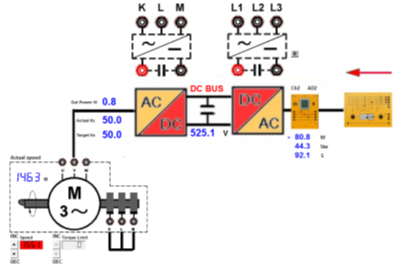
PL-514399
This trainer allows the students to study the functions and operations of a modern wind power plant simulating on it the effects of the wind force. It is designed starting with a few related concepts providing in-depth coverage of basic topics related to the field of electrical energy produced from the wind and some major aspects about Wind Power Plant management. This system operates through a brushless machine and the simulation software, and the Doubly-fed Asynchronous Generator (DFAG) or (DFIG – Doubly-fed Induction Generator) allows a practical and effective approach to this trainer. Doubly fed electrical generators are like AC electric generators but have additional features which allow them to run at speeds slightly above or below their natural synchronous speed. This is useful for large variable speed wind turbines because wind speed can change suddenly. The DFAG can change the speed of the generator rotor by means of controlling the frequency of the rotor field current. When a gust of wind hits a wind turbine, the blades try to speed up, but a synchronous generator is locked to the speed of the power grid and cannot speed up. So large forces are developed in the hub, gearbox, and generator as the power grid pushes back. This causes wear and damage to the mechanism. If the turbine is allowed to speed up immediately when hit by a wind gust, the stresses are lower with the power from the wind gust still being converted to useful electricity. One approach to allowing wind turbine speed to vary is to accept whatever frequency the generator produces, convert it to DC, and then convert it to AC at the desired output frequency using an inverter. This is common for small house and farm wind turbines. But the inverters required for megawatt-scale wind turbines are large and expensive. This proposed trainer has a modular structure that will grant teachers and students extreme flexibility during the study of the related topics and the performance of the experiments. It is divided, from the hardware point of view, in: • PC with the specific software, • Wind sub-model, • Turbine sub-model, • Frame with modules required for running the Wind Power Plant trainer. For the Wind sub-model, it has the architecture shown below: The frame includes all the remaining modules of the DL WPP trainer such as: • PC with SCADA application, • Three- phase power supply unit, • Three- phase power measuring unit, • High power switches with local and remote control, • Brushless driver, • Hub for communication. And the main essential control unit of the trainer is the Back-to back converter This control unit allows approaching and theoretically in depth analyzing the following topics: • Operation of the DFAG, • Integrated power switch for switching the generator online, • Reactive and active power, frequency, and voltage control, • Mains synchronization. As previously mentioned, this trainer is complete with interactive multimedia SCADA software that can control and set several operations of the system; with this software it is possible to adjust the wind speed and profile and to examine the effects on the operating functions of a real Wind Power Plant. Another important feature of this software is related to the possibility to control, parameterize and visualize the obtained data.
With this software it is possible to perform the following activities: • Measurement, calculation, and graphic representation of many mechanical and electrical operating parameters, • Selection of the set-point values for reactive and active power, • Definition and simulation of wind power and profiles, • Interactive experiments set-up, • Values and graphs can be stored, • Experiments instructions can be viewed directly from the software, • Possibility to print documents for easy hardcopy printing of experiments instructions with solutions. With this Wind Power Plant trainer, it is possible to perform the following experiments: • Study of functions and operations of a modern Wind Power Plant, • Relationships between a pitch control system and the wind, • Analysis of the mechanical parameters within an induction generator, • Analysis of the electrical parameters within an induction generator, • AC/DC and DC/AC IGBT converter, • Starting method of a Wind system, • DFIG (Doubly fed Induction Generator). Optional modules could be added to the main configuration of DL WPP (see Configurations at the end of this catalogue) to also perform: • Experiments on the Fault Ride Through control. This last optional part Fault Ride Through (FRT), sometimes Under-Voltage Ride Through (UVRT), or Low Voltage Ride Through (LVRT), is the capability of electric generators to stay connected in short periods of lower electric network voltage. It is needed at distribution level to prevent a short circuit at HV or EHV level from causing a widespread loss of generation. The DL WPP trainer is dedicated, first, to students with some electromechanical background who want to understand the use of the wind power plant in the generation of electrical energy. It is also suggested to be used in the following: • Departments and/or faculties such as for • Mechanical Engineers, • Electrical Engineers, • Wind farm developers, • Renewable Energy field Engineers, • Control system Engineers, • SCADA developers. • Postsecondary schools such as for • Wind energy technicians, • Electromechanical technicians, • Power systems electrical technicians, • SCADA technicians, • Electrical utility technicians. • Trade schools/colleges and technical institutes and further education such as for • Senior multi skilled technicians in electromechanical Engineering, • Electrical/Mechanical technology technicians, • Field service technicians, • Electrical utilities technicians. • Vocational secondary school of electrical and/or mechanical Engineering. Power supply: Three-phase 400V+N+PE/50Hz, 2kVA. CONFIGURATIONS: DL 2108T26: BRUSHLESS CONTROLLER WITH MOTOR DL 2108T26BR: BRAKING RESISTANCE DL 1022P4: SLIP RING THREE-PHASE ASYNCHRONOUS MOTOR DL 1013A: BASE DL 2108TAL‐CP: THREE PHASE SUPPLY UNIT DL 2109T29: THREE‐PHASE POWER METER DL 2108T29: BACK TO BACK INVERTER DL 2108T02: POWER CIRCUIT BREAKER DL HUBRS485F: MODBUS COMMUNICATION HUB DL WINDSIM: WIND SIMULATOR DL SCADA-WEB: SOFTWARE SCADA DL 1155WPP: KIT OF CONNECTING LEADS DL A120-3M-LED: THREE-LEVEL FRAME WITH LED STRIP DL PCGRID: ALL-IN-ONE PERSONAL COMPUTER DL T12090_SK: WORKBENCH 120X90 DL T06090: WORKBENCH 60X90 DL 1196:HOLDER FOR LEADS DL 2600TTI: THREE-PHASE ISOLATION TRANSFORMER OPTION MODULES FOR THE FAULT RIDE THROUGH (FRT) DL 7901TT: LINE MODEL DL 2108T18: MULTIFUNCTION THREE‐PHASE OVERVOLTAGE/UNDERVOLTAGE RELAY DL 1017R: RESISTIVE LOAD DL 2108T02: POWER CIRCUIT BREAKER
What is this?
These percentage scores are an average of 0 user reviews. To get more into detail, see each review and comments as per below
If you have used this product, support the community by submitting your review





